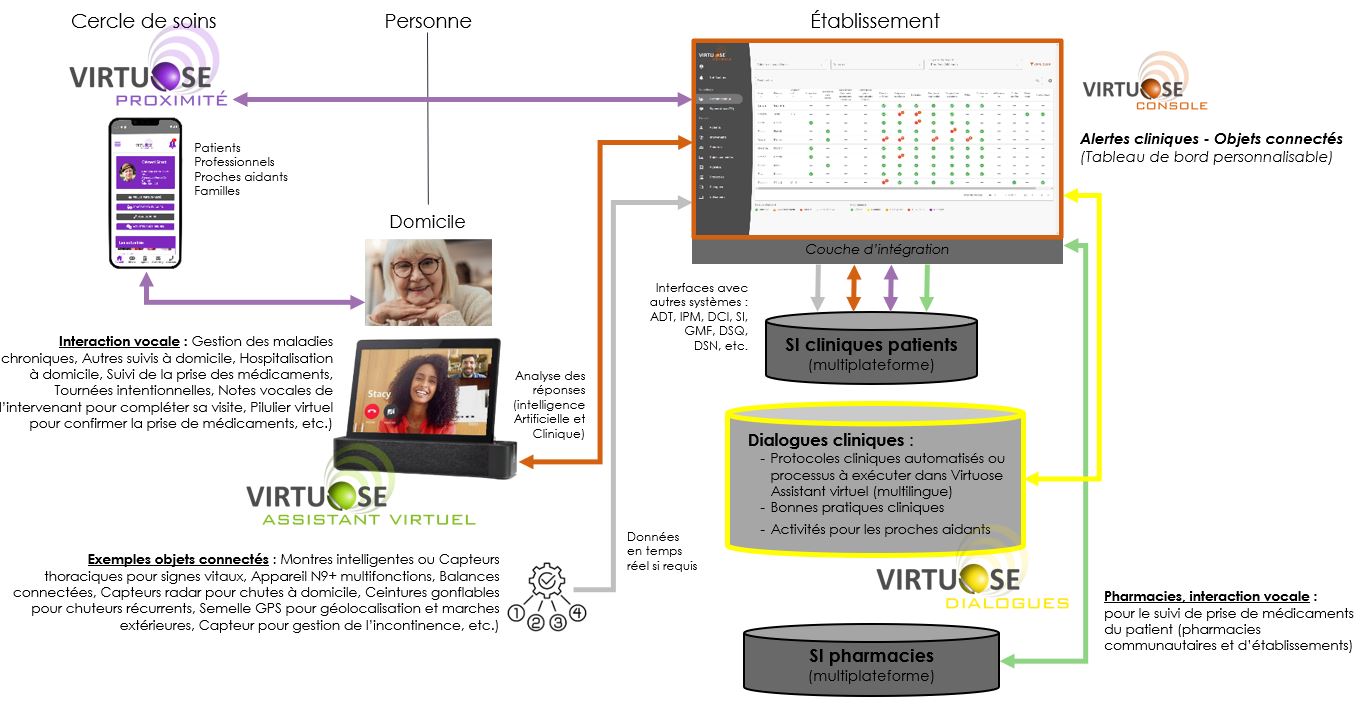Schéma Fonctionnel

Examples: Connected objects to Virtuoso Console
Watches and Thoracic Sensor
- The most suitable smartwatches are from 'Biobeat Technologies' and 'Masimo.'
- These are the only remote vital signs monitoring medical devices that have received Health Canada approval to date.
- They comply with the IEC 60601 standard.
- These products have superior battery autonomy with a lifespan of 3 years. Additionally, they continuously, wirelessly, and in real-time measure various vital signs including:
- Blood oxygen saturation
- Continuous blood pressure
- Heart rate
- Respiratory rate
- Systolic volume
- Cardiac output
- ECG (thoracic sensor)
- Differential pressure
- Systemic vascular resistance
- Temperature
- Heart rate variability
- Mean arterial pressure
- Cardiac index

Examples: Connected objects to Virtuoso Console
Scale, Camera, and Radar Sensor
- Smart scale for monitoring weight fluctuations. Some scales can even monitor body mass and fat.
- Using a surveillance camera system, the ability to detect patient falls through AI, alert relevant staff, and send a video excerpt to document the incident.
- The LISA platform (radar sensor) uses advanced contactless fall detection technology to monitor individuals in healthcare units or at home.


Examples: Connected objects to Virtuoso Console
"New: The Nonagon N9+"
- Our latest: A home medical examination device allowing 9 remote physical examinations.
- The portable Nonagon N9+ device is authorized by Health Canada to perform 9 remote physical examinations using 4 medical-grade sensors and a camera:
- Record temperature
- Photograph the skin (AI interpretation of progression)
- Check temperature level
- Record lung sounds
- Listen to your heart
- Photograph the inner ear (AI interpretation of progression)
- Record abdominal sounds
- Photograph the throat (AI interpretation of progression)

Virtuose Technologies' healthcare solutions support you in the digital transformation of your organization
Integrate our innovative and secure solutions that will contribute to optimizing the use of your resources for the well-being of the patient.
